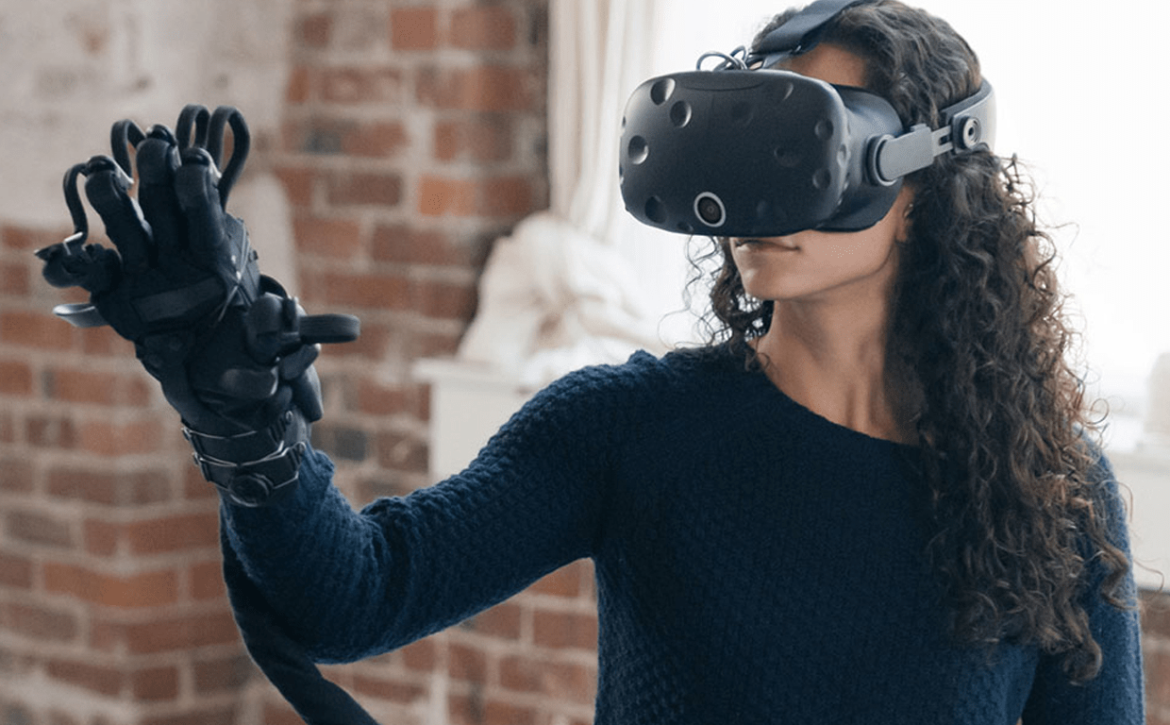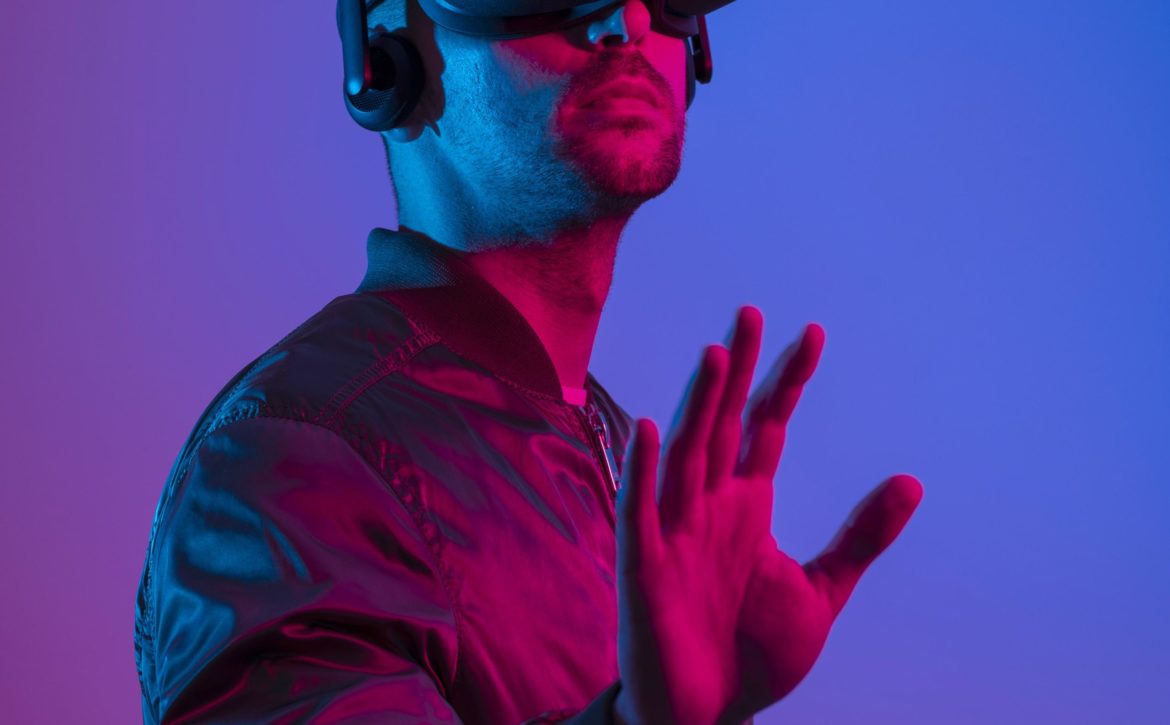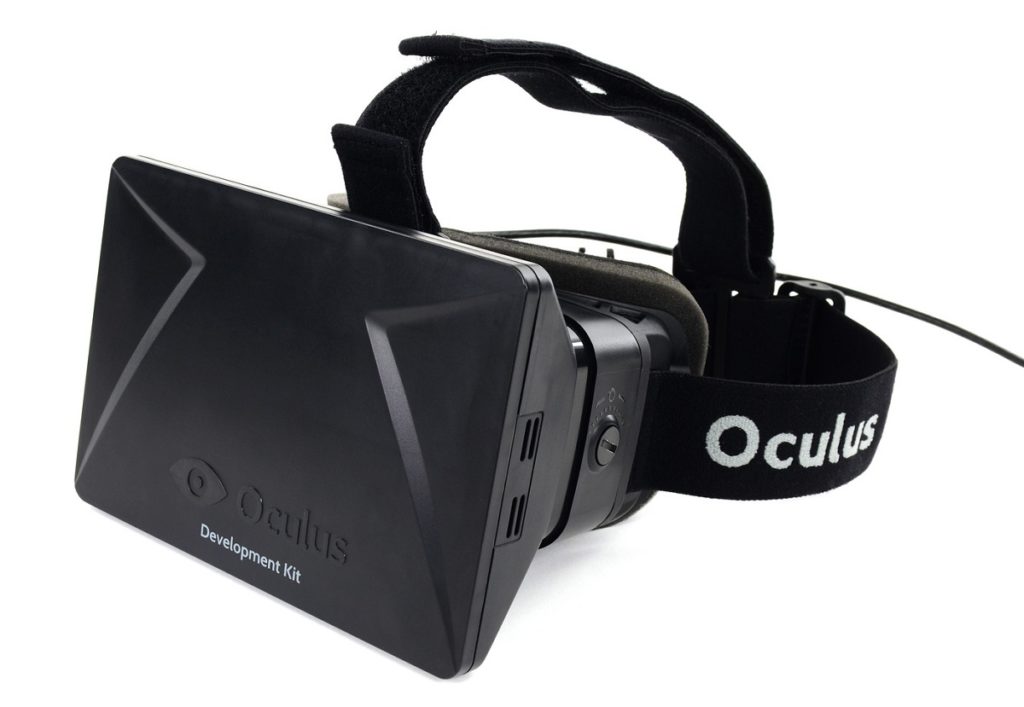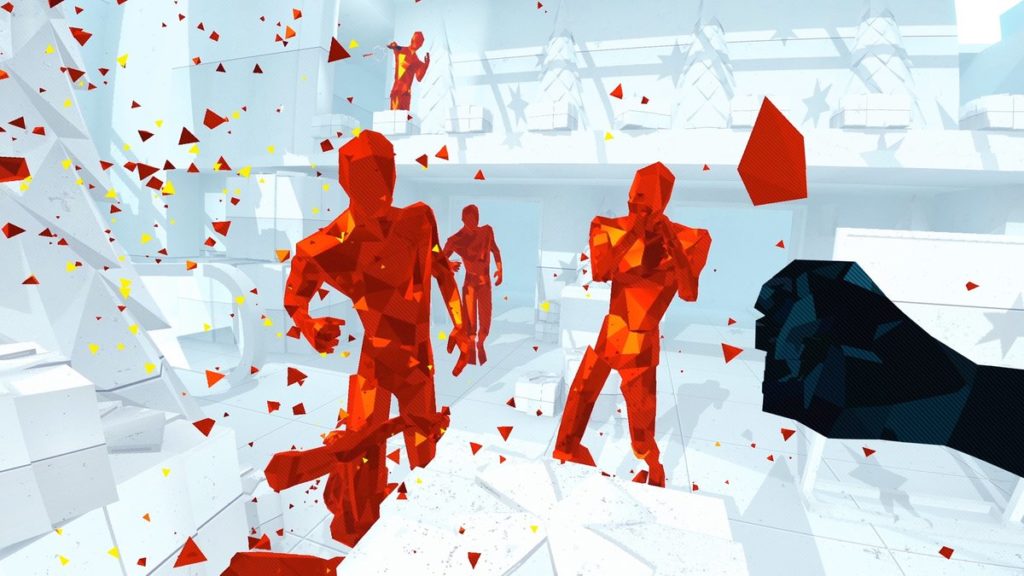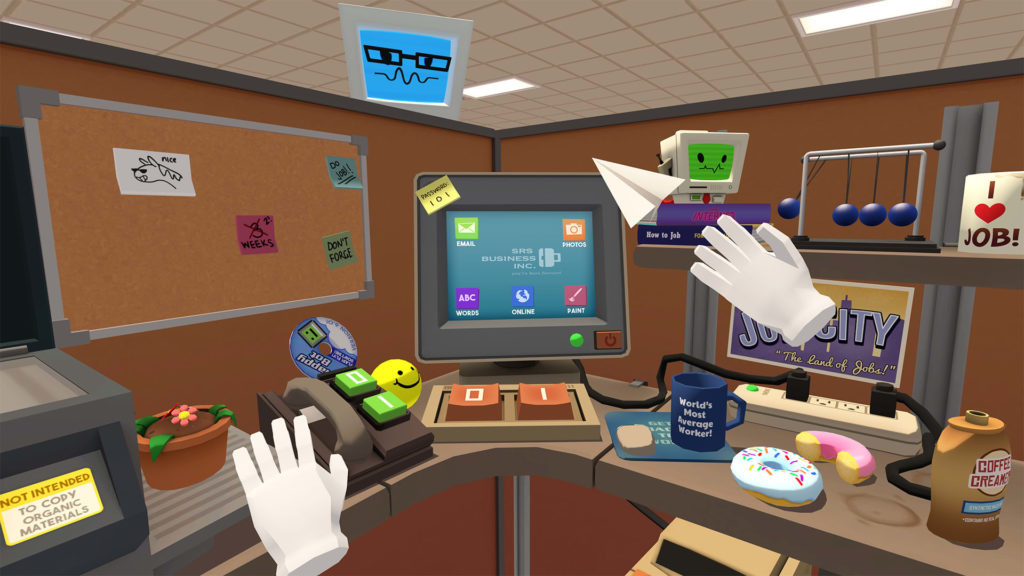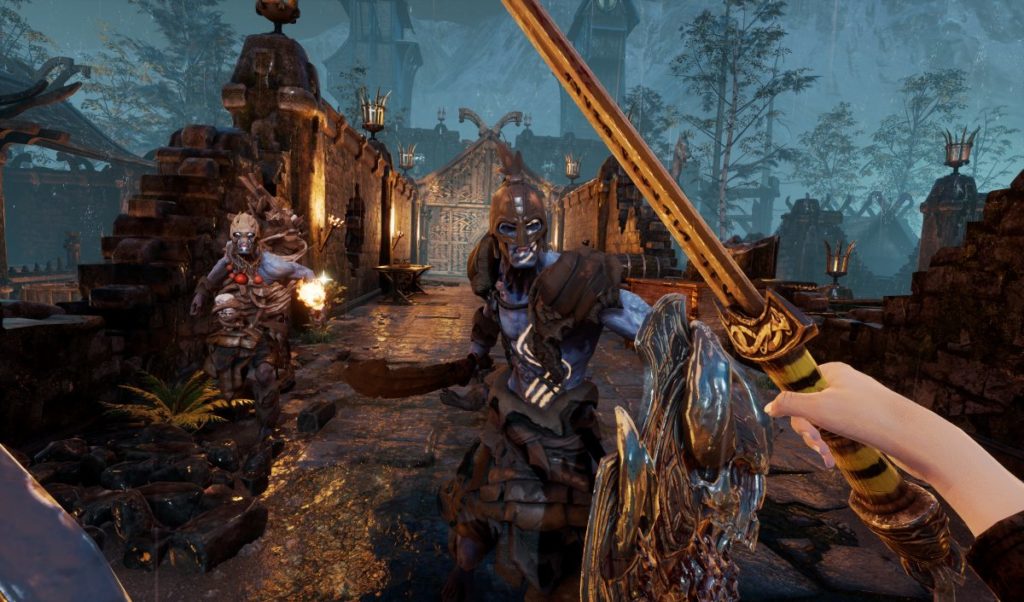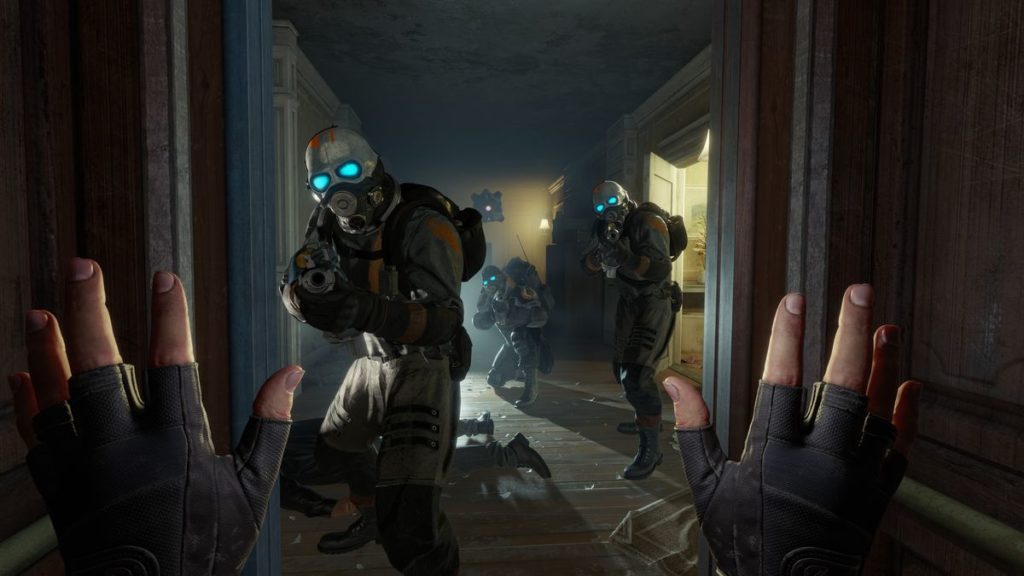The Future of VR Gaming
In a previous article, we discussed the evolution of VR gaming and VR technology. In this piece, we will discuss their future.
Since they first hit the market in 2015, VR headsets have become (relatively) cheaper, and now come with a wide selection of games boasting high-quality graphics, immersive environments and highly-interactive game worlds. Headsets now boast higher resolutions, better motion detection and controls, and are also getting cheaper.
Yet the industry faces multiple challenges that hinder virtual reality’s adoption among gamers and other users. This has not stopped tech giants like Meta, Apple and Google from backing the technology – and has spurred developers to solve the problems with current VR technology and enhance the VR experience.
What is Holding VR Gaming Back?
The VR industry remains niche, even in the gaming market, where it has seen actual gains. Despite improvements in the technology, user experience is cited as one of the biggest obstacles to VR adoption. VR sickness – the dizziness, disorientation and nausea experienced in VR – remains a problem that deters users from fully committing to VR and raises health concerns about VR gaming.
The pandemic wasn’t kind to VR gaming either – hardware shortages coincided with the release of the first great AAA VR game, Half Life: Alyx, and VR arcades went out of business due to lockdown restrictions.
VR Gaming Remains a Niche Market
Experts rate that VR is most prevalent in gaming, where it has the greatest potential to immerse users in all-encompassing worlds.
Statistics show that VR is one of the fastest-growing segments in media, due in large part to VR gaming, and the Quest 2 powered strong headset sales in 2021. However, VR headset and game sales still constitute a minute fraction of the gaming market: they accounted for 0.4% of the $130bn revenue from gaming hardware and software in 2020. The VR gaming market size is expected to reach $42.5 bn in 2025, while the gaming market as a whole is expected to be worth $300 bn by then.
When optimistic projections are seen in context, it appears that VR may remain a niche market in the coming years – unless the efforts of those in the industry propel it to new heights. VR game sales figures also need to be seen in context: Beat Saber took three years to reach an estimated $180 million in revenue, while Red Dead Redemption 2 made $725 million in its first weekend of release.
Costly, but Not User-Friendly
Tech observers have not been kind to the nascent VR industry, continually citing the poor user experience, the high price, the problems with the gear, motion sickness, and the mixed success of VR arcades as proof that VR is failing to live up to its potential.
VR technology remains problematic, according to PC Gamer – handling and throwing objects still doesn’t feel right, headsets remain bulky and uncomfortable, and VR gear has few provisions for accessibility and the physically challenged. Although the most popular headset, Quest 2, costs only $300, Valve’s Index headset and ‘knuckle’ controllers together cost $1339, and the HTC Vive Pro costs $1399 (as of the time of writing this blog). Both Valve and HTC’s headsets need to be tethered to powerful PCs as well. Despite the high cost, these VR kits do not track full-body movements to enable natural walking or running in virtual environments.
A Polygon article considers current VR hardware a ‘trainwreck for anyone but people who like to build their own PCs’. Virtual reality is evolving rapidly, and that can paradoxically stymie its adoption today. This is at the center of Polygon’s screed against VR: why spend money on a bulky, blurry headset today when just five years later, you may have access to HDR headsets with even higher resolutions?
Gaming Took Off During the Pandemic; VR Didn’t
VR gaming didn’t quite take off during the pandemic, even though gaming revenues soared during the lockdown. The greatest VR game yet, Half Life: Alyx, was released on March 23, 2020. Yet its release coincided with a shortage of headsets such as the Valve Index, the Oculus Quest and the Rift S. Due to VR’s dependence on dedicated hardware, Half Life: Alyx could not reach its full potential in sales, even when millions turned to gaming as a way to cope with lockdowns.
The pandemic almost put an end to VR arcades, where gamers could roam freely in enclosures, wearing headsets tethered to PCs slung on their backs, shooting zombies and other enemies using arcade guns. Such arcades were considered the future of virtual reality in gaming until the lockdown – and its attendant restrictions on public gatherings – put almost all of them out of business. One of them, however, has made a triumphant return: Sandbox VR, a Hong Kong-based gaming company that went bankrupt during COVID, has since re-emerged from ruin after a strong round of fund-raising and plans to open new arcades in London, Toronto and other cities in 2022.
Motion Sickness Puts Gamers off VR
In 2016, a Los Angeles writer played the VR game Tilt Brush for 25 hours straight, while representatives from the Guinness Book of World Records watched. He vomited once while playing, and after he stopped, the world looked ‘uncanny’ and distant objects felt unreal. He recovered in a day, but found the experience overwhelming. His record has since been broken.
VR headsets cannot track leg movements, and gamers hence use controllers to move forward in-game (while remaining still in the real world). This results in motion sickness and discourages users from spending prolonged periods in virtual reality.
A Healthline article lists nausea and vomiting, queasiness, cold sweats, dizziness, headache, and fatigue as the symptoms of VR sickness – and ties it directly to the strong sense of ‘presence’ created by the verisimilitude of VR gaming. This immersion fools your inner ear into thinking that you are moving – even as your muscles and joints report that you are still. The better the game is at creating a strong sense of presence, the more pronounced the symptoms can get.
A variety of cures are suggested, including fresh air, aromatherapy and ginger, and gamers who want to curb VR motion sickness symptoms while playing can try scopolamine patches, Dramamine or acupressure wrist bands. Symptoms subside a few hours after the VR session ends, though if they persist, you should see a doctor. A technology that all but requires medication is unlikely to attract new users.
The Healthline article recommends using VR treadmills and other devices that accurately track leg movements in the real world to simulate movement in virtual reality – and hardware developers are hard at work creating consumer-grade versions of such devices.
How the Tech World is Tackling VR Problems
Given this litany of problems and grievances, it is no wonder that Wired has called for the VR industry to be judged on its performance, rather than optimistic projections and the aspirations of tech giants like Meta.
Each VR problem has a potential solution that can help widen user adoption.
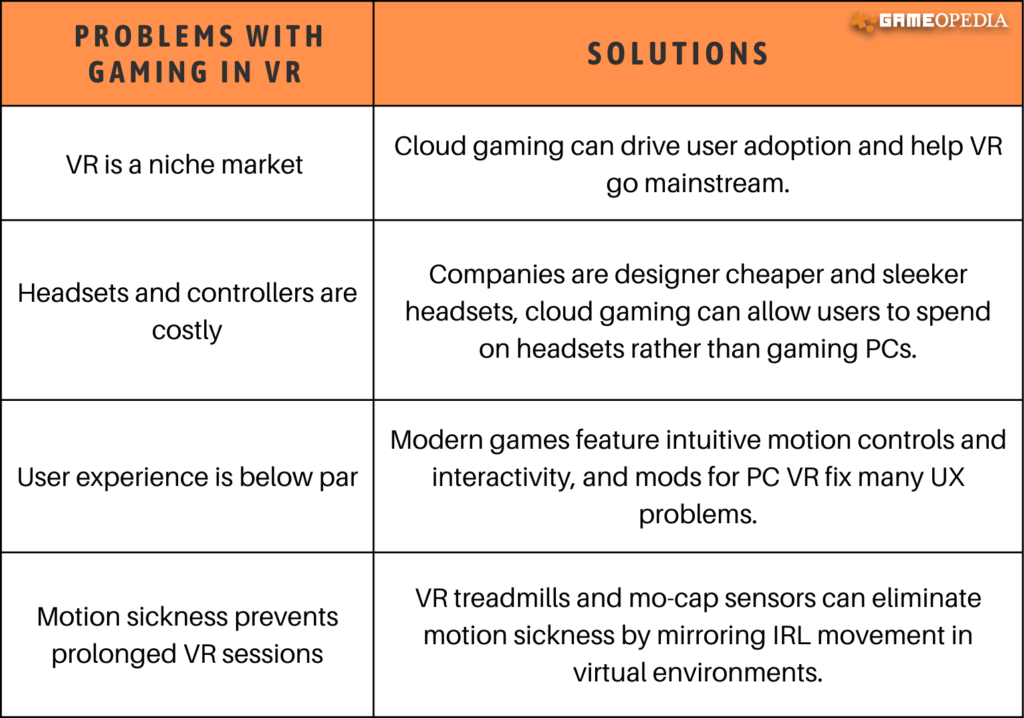
The tech world continues to pour millions into VR development – companies are developing new technologies to improve the VR experience, and Facebook is the biggest player in the VR market, though Apple, Google and Microsoft are also in the fray.
Tech giants aren’t in this game for gaming alone: they are rushing to create the metaverse – a combination of virtual and augmented reality where users fully inhabit a simulated world created by technology, interacting with each other within its confines. The metaverse may not be ostensibly relevant to gaming, but will inevitably result in improved UX and VR technology designed for prolonged (and varied) use, and can include gaming within its broad scope.
In an illuminating video on the metaverse as it exists today, Wall Street Journal columnist Joanna Stern spends a day in virtual reality – she kicks things off with a game of Beat Saber, then visits AltSpaceVR for social interaction, and sleeps with the help of a meditation app. On waking up she uses a browser to read the news, works out using the Supernatural fitness app, and attends virtual meetings for hours, eventually getting a headache. Tech giants want to create such experiences (except perhaps the headache) on a far grander scale – the closest approximation to this is Steven Spielberg’s movie Ready Player One.

Redefining VR for the Future
Many hardware developers are working to address the technical shortcomings of VR gear – headset makers are making lighter and sleeker headsets, while developers are designing new locomotion tracking gear so that movement in real life is mirrored in virtual space. A community of enthusiasts is also enriching VR with literally game-changing mods that either improve gameplay in a VR game, or enable VR modes in flat-screen games. Developers are also coming up with lightweight and inexpensive solutions for natural movement in virtual reality. Cloud VR gaming is in a nascent stage but holds great promise for the future of gaming in VR.
Sleeker and Lighter Headsets
VR headsets in the past have been bulky and awkward to wear, but Sony, Panasonic, HTC and Apple are designing sleeker, lighter headsets that boast higher resolutions.
The PlayStation VR 2 headset is far sleeker than the PSVR, and offers 4k resolution. Meta’s Oculus Quest 2 headset weighs a mere 503 grams, while Apple is designing a headset that combines virtual reality and augmented reality and uses a special lens to keep the headset’s weight under 150 grams. While the Apple headset doesn’t have a release date, the PS VR 2 is expected to reach consumers by 2023.

The HTC Vive Flow is the sleekest pair of VR goggles on the market now, resembling foldable glasses. It interfaces with smartphones, weighs 189 grams and fits in a small case. It does not support VR gaming but is meant for ‘mindful productivity and wellness’. You can also view VR content and use a smartphone as a rudimentary controller. The Vive Flow clearly indicates how cool and lightweight VR headsets can become in the near future.

Panasonic’s UHD headset looks like a pair of steampunk goggles – and is the first of its kind, enabling high-dynamic range visuals – although the company has not yet announced a consumer-grade version.

Curbing Motion Sickness
Motion sickness in virtual reality can be alleviated to a great extent when actual movements in the real world drive movement in virtual reality. Solutions for achieving this sort of immersive, seamless navigation include VR treadmills and motion-capture sensors.
Omnidirectional treadmills are arguably the most robust solution: they prevent motion sickness and the possibility of crashing into a wall or your room’s furniture when you unintentionally move around in your room while immersed in a game.
The Kat Walk C, made by Kat VR, is marketed as the first personal VR gaming treadmill and allows users to slide on a base while strapped to two cross-bars, and is designed to fit in small interiors. The base detects body movements, which are translated into seamless real-time locomotion in virtual reality. The treadmill decouples head-turning and leg movement – you can move in one direction while looking in another – and allows strafing, crouching, and peeking out from corners. VR motion controllers already enable some – but not all – of these movements, while an omni-directional treadmill like the Kat Walk C detects all such motion in real life and mirrors them in virtual reality.

The Kat Walk C (on sale as of the time of this writing) costs $1399 – users looking for a more affordable solution can try out the walk-in-place mo-cap sensors made by WalkOVR.
WalkOVR’s wearable tech converts in-place movement in real life into real-time omnidirectional locomotion in VR. These wearable sensors, known as OVR Nodes, are attached to your shins, ankles and chest and let you move in your virtual environment by walking or running in place, and change direction by moving your torso. Customers can choose from pared down options (with only a chest band or two knee bands) or the full set, which includes OVR Nodes for the chest, shins and knees. Like an omnidirectional treadmill, WalkOVR allows crouching and decouples head turning from leg movement, allowing you to walk in one direction while looking in the other. The full set of WalkOVR’s wearables costs $249, while a pared down set that includes only the leg bands costs $119.

VR headsets generally allow you to move only in the direction you are facing – and both the Kat Walk C and Walk OVR’s technology solve this problem, allowing a wider range of movements and a more natural and immersive way to navigate virtual reality. Neither the treadmill nor the wearables are cheap – but their focus on gaming suggests that there does exist a market among gamers for this type of technology.
Mods and Plugins Enrich PC VR
The PC VR community is a thriving space – mods improve the VR experience or enable VR mode for flat-screen games, and developers have come up with lightweight solutions for leg tracking to simulate movement in VR.
Natural Locomotion is a plugin that allows you to move forward and backward by swinging your arms. Its ‘feet mode’ can use a smartphone, Nintendo Switch Joy Cons or other devices that can double as motion sensors to simulate movement in VR using in-place walking and running.
Skyrim’s VR mods fix many of the issues with the vanilla game, and also add new gameplay elements from other successful VR titles. The VRIK mod gives you a full body in-game – your hand and arm gestures in real life are mirrored in the game world. The Higgs mod replicates the gravity gloves mechanic of Half Life: Alyx and lets you interact with multiple in-game objects – addressing PC Gamer’s criticism that handling and throwing objects in VR doesn’t feel right.
The recently released Planck mod uses collision-based mechanics to allow you to slap people in-game, grab onto them and drag them along, and adds accurate weapon tracking so that you are able to hit targets properly in VR, instead of flailing around.
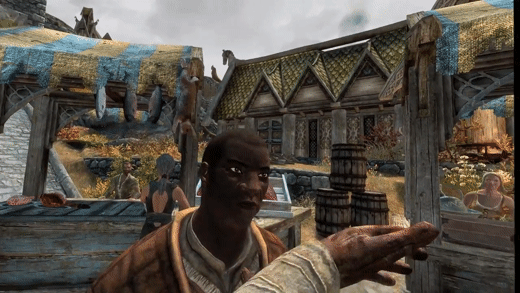
Cyberpunk 2077 now has a VR version. thanks to the efforts of mod author Luke Ross. The prolific creator has also made a free VR mode for GTA V, and supporting him on Patreon unlocks the early-access Read Dead Redemption 2 VR mod for patrons. Ross’s mods aren’t complete VR experiences – they require the use of a gamepad or controller for movement and combat – but they still allow gamers to experience non-VR game worlds using VR headsets.
With mods and plugins, the PC VR community could ensure a permanent niche for virtual reality gaming, and even help it go mainstream if bigger companies acquire community mods.
Going Mainstream on the Cloud
VR cloud gaming, which could be the biggest driver of VR adoption, is still a developing technology. Cloud gaming is dependent on strong internet networks for smooth streaming – industry insider Amir Bozorgzadeh insists that 5G networks are necessary for headsets to become lighter, as 5G will shift the computing burden from the CPU and GPU to edge servers.
Timoni West, head of virtual reality and augmented reality at Unity (the makers of the industry-standard game engine of the same name) believes that photorealistic renders – which can help achieve total immersion in VR – are far beyond the capabilities of current VR headsets.
Cloud computing could enable VR headsets to achieve photorealism, and by removing the need for expensive GPUs or gaming PCs, the cloud could also address concerns about the high cost of VR headsets. Cloud gaming could thus drive VR adoption and help it reach the mainstream.
However, cloud VR gaming is still very much a work-in-progress, Nvidia CloudXR looks to be the only scalable solution, and was accessible only through an Nvidia developer account until it was made publicly available on the Google Cloud Marketplace. Plutosphere is a new cloud VR beta for the Oculus Quest series of headsets and has a host of requirements: it needs at least 50 Mbps bandwidth and a WiFi 6 router; the headset should be connected on the 5 GHz band and for best results, you should play in the room where your router is set up.
The success of the standalone headset Oculus Quest 2 and the spread of 5G wireless networks suggest that lighter and cloud-powered headsets may become the norm. The Quest 2 already allows you to stream games from your PC using its Virtual Desktop App, and if such headsets start integrating with the cloud, VR gaming could reach an ever-widening user base.
Conclusion
VR gaming is a nascent field that has its fair share of problems, leading observers to wonder if it is just a fad. The need to invest both in hardware and games creates a high barrier to entry.
Yet tech giants are deeply committed to VR research and the metaverse. Their efforts will inevitably help VR reach a wider audience, lead to sleeker and lighter gear, and improve the gaming experience as a spillover effect. HTC’s Vive Flow, one of the most stylish headsets available today, is marketed as ‘your VR companion in the metaverse’.
VR accessories such as omnidirectional treadmills and mo-cap sensor wearables can have a huge impact on the gaming experience by preventing motion sickness. Currently, these solutions are costly – but falling headset prices can lead to cheaper accessories too.
The emergence of 5G networks and cloud gaming also point to lighter and standalone headsets with cloud-powered VR experiences that do away with expensive gaming hardware.
The future of VR gaming depends for the most part on the people in the field itself, and if their efforts are any indication, gaming in virtual worlds will only get better with time.
At Gameopedia, we work with clients on custom requests and can provide in-depth analytics on any subject related to gaming and VR. Reach out to us to get access to data that will yield valuable insights into the world of VR gaming and its future.

